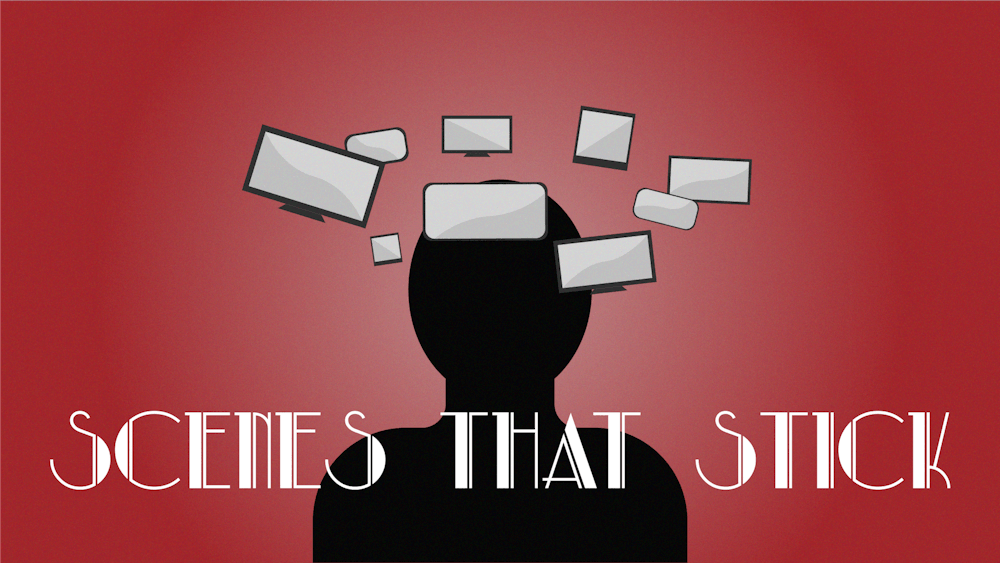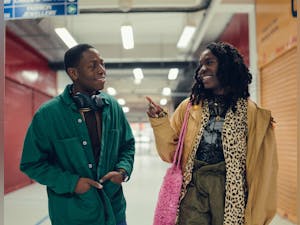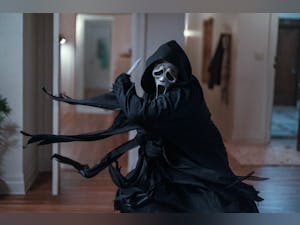From: Silver Screen
Scenes that Stick: Amy Adams brings all the complexities of ‘Arrival’ into focus with one devastating glance

The final scene of Denis Villeneuve’s masterful “Arrival” is a perfect example of the type of movie magic that can only occur when a director and actor are in absolute sync.
“Arrival” tells the story of one of America’s leading linguists, Louise Banks (Amy Adams), as she navigates the complexities of language both of this world and beyond.
In the opening sequence of the film, Louise is seen in a flashback — sort of — raising her young daughter, Hannah. As the sequence progresses, Hannah ages into a teenager and then is diagnosed with an incurable disease which will render Louise grieving and childless.
The film then shifts in time. Louise is seen teaching linguistics at a coastal university when 12 extraterrestrial spacecrafts suddenly arrive around the globe. The U.S. Military shows up at Louise’s door asking her to complete a nearly impossible task: they need her to communicate with the aliens and find out what it is they want on Earth.
Louise is then whisked away to Montana, one of the alien arrival sites, with a physicist named Ian Donnelly (Jeremy Renner). Louise and Ian have a purely professional relationship, give or take some mild flirting and admiration for each other’s specialties. But they are the only two people who seem to be making any progress in understanding the aliens.
After several encounters with the aliens — scientifically referred to as heptapods because of their seven limbs — Louise begins to see visions, or memories, or both. Her daughter returns to her in fragments and snippets, and these visions only become more intense as Louise grows closer to understanding the heptapod language.
In these visions, Hannah and Louise are often seen alone, discussing why Hannah’s father left them. Louise explains to Hannah that her father left because Louise had told him something that he wasn’t ready to hear. It turns out communication only becomes more difficult when it involves matters of the heart.
As the film approaches its climax, Louise is gifted the complete alien language by one of the heptapods, but it turns out the language is actually a portal into time. In that moment, Louise suddenly understands that the visions she has seen are of the near future.
As humanity is about to wage war on its extraterrestrial visitors, Louise must use her gift to stop the human race’s impending mistake. She succeeds, but only nearly. The extraterrestrial spacecrafts disappear into the sky.
In the film’s breathtaking conclusive scene, everything becomes clear. In a stunning over the shoulder shot, Louise looks up at Ian as the mist rises over the Montana mountaintops. She realizes that Ian is the man she will marry, conceive Hannah with and who will eventually leave her once she reveals to him that she has always known how and when their daughter will die.
Adams delivers this gut-punch of a glance to devastating effects. The emotional arch of the film and Villeneuve’s entire vision hinge on this very moment.
Villeneuve then seamlessly toggles between the present and the future. Slices of Louise and Ian’s future life with Hannah intercut with moments from the present, as Louise and Ian take their initial steps toward romance in the wake of the alien departure.
Every frame in this final scene is colored in hues of gray, blue and sepia. The color scheme is a visual reminder of the deep sadness at the root of Louise and Ian’s coming together. Max Richter’s heartbreaking string arrangement of ‘On the Nature of Daylight’ swells beneath the action, furthering the emotional power of the moment.
Staring out into the void where the spacecraft once hovered, Lousie asks Ian, “If you could see your whole life from start to finish, would you change things?”
Even with her back turned to the camera, Adams exudes the gravity of Louise’s predicament. She knows everything — her whole life. She even knows what is about to happen next.
Ian turns to Louise and says, “You know, I’ve had my head tilted up to the stars since I can remember. You know what surprised me the most? It wasn’t meeting them. It was meeting you.”
Louise embraces Ian. She nestles her chin into his shoulder. Villieneuve then pulls the camera close to her face, so that the look of pain and acceptance radiates from Adams’ eyes.
With one silent look Adams confirms why she is one of the greatest living American actors. Villeneuve trusts her completely to untangle all of the film’s complexities in this final scene and she does so effortlessly. Paired with Villeneuve’s thoughtful and meticulous direction, the two artists prove themselves to be an unstoppable force.
In a voiceover from the future, Ian asks Louise if they’d like to have a baby.
Despite knowing how it ends, despite knowing the pain and loneliness that is yet to come, Louise responds resoundingly, “Yes.”
“Arrival” is available to stream on Hulu.




